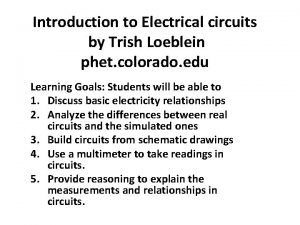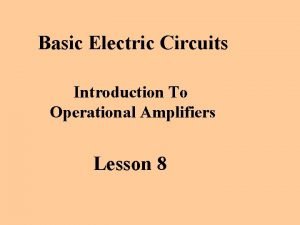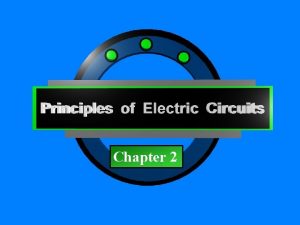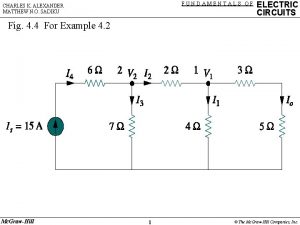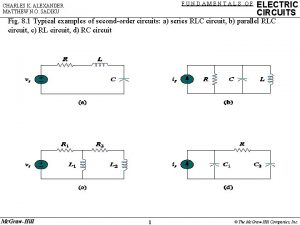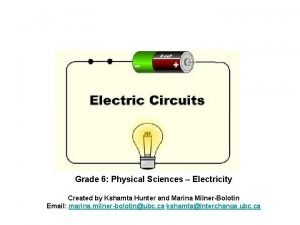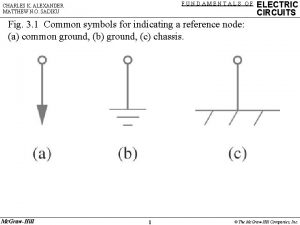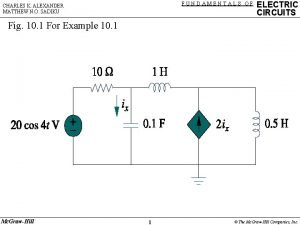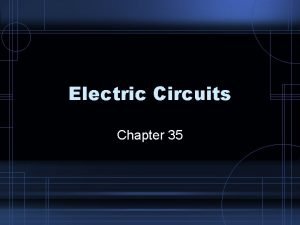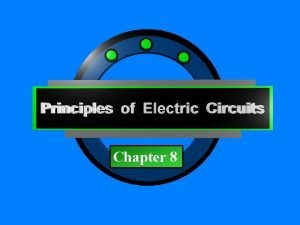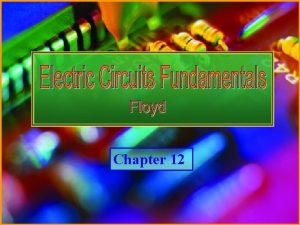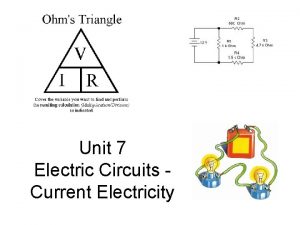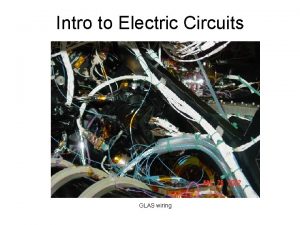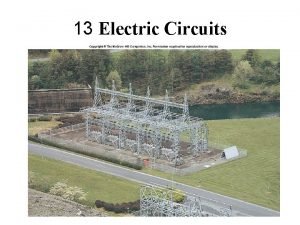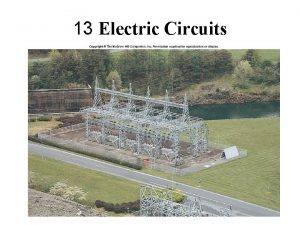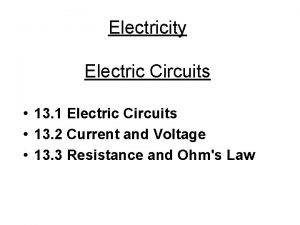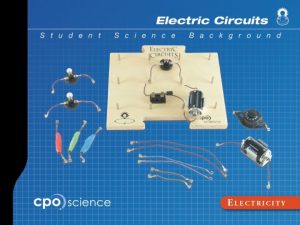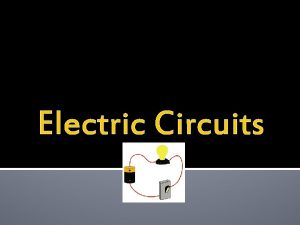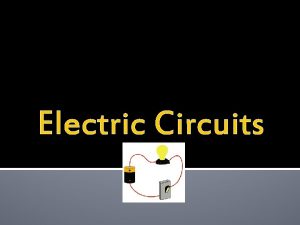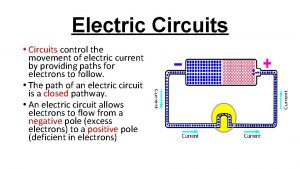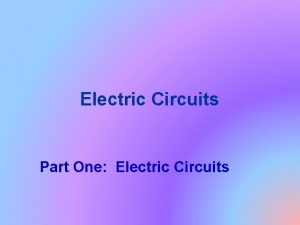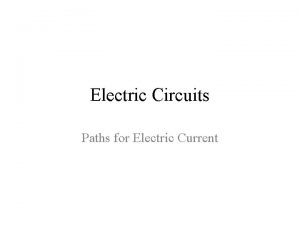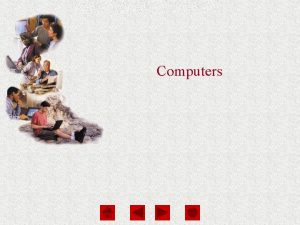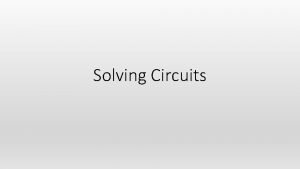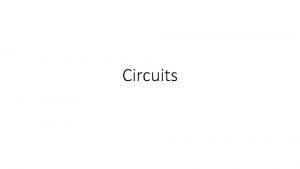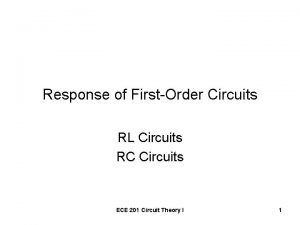JC Technology Electric Circuits Electric Circuits Computers CD
























- Slides: 24

JC Technology Electric Circuits

Electric Circuits • Computers • CD Player • IPhone How do they work? Computers CD Player Plug in and turn on • IPhone – Charge battery and turn on All use Electricity – part of electric circuit

Electric Circuits • Loop/path/route – connects device to a power supply • Device turned on – electric current flows around the loop • Device works Simple Circuit Battery = Power supply Switch opens & closes circuit

Electric Circuits Circuit Diagrams – symbols are used to represent components =

Electric Circuits Electric Current: The flow of electrons through a conductor Conductor – materials that allows current to flow through it examples: copper, gold, silver, tin, iron Electron – negative charge Nucleus: neutrons – no charge protons – positive charge Copper Atom

Electric Circuits Electron on outer shell of atoms can move between atoms No power supply - movement is random conductor

Electric Circuits Conductor connected to power supply: Electrons all move in same direction – electric current

Electric Circuits Measuring electric current – Ammeter must be connected correctly Unit of measurement = Ampere (A) or amp Represented by letter I

Electric Circuits • Electromotive Force (EMF) – force that makes electrons flow around a circuit • Unit of measurement = Volt • EMF often called Voltage • Higher voltage = more current

Electric Circuits • Voltage is represented by letter V • Measured using a voltmeter

Electric Circuits • Resistance: opposition to the flow of electric current • All components have resistance • Unit of measurement = Ohm (Ω) • Represented by letter R • High resistance = less current

Ohm’s Law ‘The electric current in a conductor is directly proportional to the applied voltage and inversely proportional to the resistance at constant temperature’ • increasing voltage increases current • increasing resistance decreases current Ohm’s Triangle

Ohm’s Law

Series Circuit • Components are connected one after the other • Only one path for current to flow around • All components on or off at same time

Series Circuit • The current at all points in a series circuit is the same

Series Circuit The applied voltage is shared between the components • Components of equal resistance – voltage is shared equally B 1 = B 2

Series Circuit The applied voltage is shared between the components • Components of unequal resistance – voltage is shared proportionally B 1 ≠ LED

Series Circuit Voltage across each component depends on its resistance • High resistance = high voltage share • Low resistance = low voltage share

Series Circuit Calculating voltage across each component

Parallel Circuit • Components are connected side by side • There is more than one path for the current to flow around • Components - on or off at the same or different times

Parallel Circuit Current is shared between the parallel paths Components of equal resistance = equal current A 1 = Current in circuit A 2 = A 3 A 1 = A 2 + A 3

Parallel Circuit Current is shared between the parallel paths Components of unequal resistance = unequal current A 1 = Current in circuit A 2 ≠ A 3 A 1 = A 2 + A 3

Parallel Circuit The voltage across each path = applied voltage R 1 = R 2

Parallel Circuit The voltage across each path = applied voltage R 1 ≠ R 2
 Advantages of parallel circuits over series circuits
Advantages of parallel circuits over series circuits Test chapter 12 computers and technology in health care
Test chapter 12 computers and technology in health care Phet electric circuits
Phet electric circuits Fundamentals of electric circuits chapter 4 solutions
Fundamentals of electric circuits chapter 4 solutions Electric current
Electric current Conceptual physics chapter 35
Conceptual physics chapter 35 Chapter 20 electric circuits
Chapter 20 electric circuits Electric circuits equations
Electric circuits equations Fundamentals of electric circuits chapter 9 solutions
Fundamentals of electric circuits chapter 9 solutions Fundamentals of electric circuits chapter 7 solutions
Fundamentals of electric circuits chapter 7 solutions Chapter 35 electric circuits answers
Chapter 35 electric circuits answers James w nilsson
James w nilsson Ohms law worksheet
Ohms law worksheet Principles of electric circuits
Principles of electric circuits Electrical circuit elements
Electrical circuit elements Fundamentals of electric circuits
Fundamentals of electric circuits Sadiku
Sadiku Superposition electric circuits
Superposition electric circuits Kshamta hunter
Kshamta hunter Alexander
Alexander Alexander
Alexander Chapter 35 electric circuits
Chapter 35 electric circuits The circuit chapter 8 summary
The circuit chapter 8 summary Electric circuits fundamentals floyd
Electric circuits fundamentals floyd Circuit symbols
Circuit symbols


